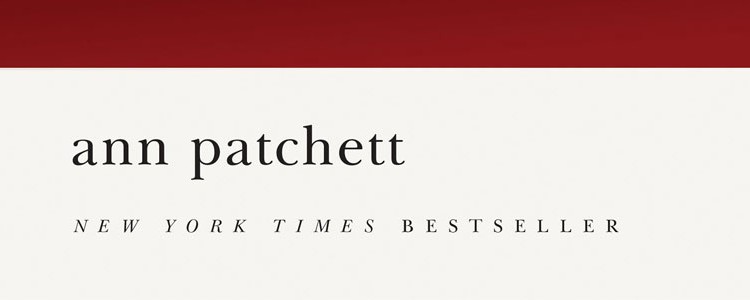 ( The latest edition of my column, PubSpeak, has been uploaded on BusinessWorld online today. The link is http://www.businessworld.in/news/economy/rules-of-publishing-be-on-the-move/1246485/page-1.html. I am also c&p the text below. )
( The latest edition of my column, PubSpeak, has been uploaded on BusinessWorld online today. The link is http://www.businessworld.in/news/economy/rules-of-publishing-be-on-the-move/1246485/page-1.html. I am also c&p the text below. )
Bloomberg journalist Brad Stone’s ‘The Everything Store’ is about Jeff Bezos and his baby, Amazon. After the book was published, Bezos distanced himself from the book. Significantly his wife, MacKenzie Bezos, gave the book a one-star rating on Amazon saying it contains “numerous factual inaccuracies” and is “full of techniques which stretch the boundaries of non-fiction”. The book is based on a number of interviews that Stone conducted with Bezos, his staff and ex-colleagues to get a sense of the firm. What is very clear after reading the book is that Amazon is significant because it has the advantage of being a first mover, it is a game-changer, certainly for publishing.
There are three points worth considering:
1. Bezos was the first to exploit the potential of the internet and collaborate with start ups with new ideas. For instance, his acquisition of a firm that specialised in digital books, with the .mobi format, resulted in his insistence on making the files uploaded on Kindle to be DRM protected.
2. He knew that sales ranks would be like a drug to authors, so he insisted that it change whenever a new order came in: thus influencing the gradual shift in publishing houses laying more emphasis on marketing and promotional activities than on editing and commissioning. (Whereas it cannot be an either/or situation, it has to be a combination.)
3. Finally Bezos’s famous analogy of comparison that publishing firms are like gazelles and Amazon is a cheetah. This belief was integral to his strategy in agency pricing. He had to persuade publishers to give him the digital files to the books they published. (It required time since many publishers discovered that they did not have the rights to the digital formats from the authors.) He was convinced marking the books at such a low price was rational since there were no printing and warehousing costs involved — a misconception that has come to be associated with the entire system of publishing. But Amazon is able to achieve much of this due to the ‘technological moat’ it has dug for itself, that is, of low margins. It ensures that with the creative vision Bezos and his team have they are able to expand their business into uncharted domains, effectively keeping competition out.
At BookMark, the B2B space for publishing professionals at the Jaipur Literature Festival there were a number of fascinating conversations about the business. Most significantly the resistance in original publishing to digital and the disruption it would cause in the publishing ecosystem was no longer making news. The presence of technology to facilitate, produce and disseminate books is now an accepted norm. It is here to stay. It was interesting to see how the industry was responding to the rapid changes taking place in the environment, necessitating a rapid pace of evolution by adapting and adopting new methods.
Take Penguin Random House CEO John Makinson’s comment at the event, for instance. The coming together of Penguin and Random House was a “strategically delivered merger” since it was the only combination that changed the game, said Makinson. He was confident that the industry would consolidate itself in a bit of time. At a time when the global industry is reeling from the massive presence of Amazon, the formation of Penguin Random House catapults it to the first position with 25 per cent share of the global market. In October 2013, Jüergen Boos, Director, Frankfurt Book Fair, at the opening of the fair, warned that companies like Amazon, Apple and Google were “logistics magicians but are not publishers”. It stands to reason since online recommendations are purchase based and not behavioural. It does not tell you what people want to read since much of the online purchases are for gifts.
There has to be serendipity in publishing. It is the smarter way of keeping the ecosystem alive, creating newer readers and shifting away slightly from being only a writer’s space.
The overwhelming presence of Amazon, Google, and the iBook store of Apple and closer to home, Flipkart, has resulted in the “disturbing dominance of content” as John Makinson put it. It is inevitable that online retail platforms will require large volumes to remain sustainable. They are not discerning and curate content as booksellers are known to do with their stocks. So, it is fairly common to find on these websites second hand, and out-of-print books, or those titles that belong to backlists but are not readily available. In fact, Paul Yamazaki of City Light Booksellers and this year jury member, DSC South Asian Literature prize is clear that he will retain titles on his shelves that are worth recommending, not necessary that it is the latest title creating waves in the media. City Light Books, is a landmark independent bookstore and publisher that specialises in world literature, the arts, and progressive politics. It was established by Lawrence Ferlinghetti and Peter D. Martin and synonymous with the ‘beatniks’.
Of late, publishers have been a worried lot since their traditional forms of publishing are not giving them the benefits they have been used to; in addition the sales of ebooks have plateaued, falling far short of the forecasts. The reliance on frontlists is making publishers an anxious lot since author brands only work for a limited time and within a given framework. For instance, commercial fiction authors are a brand unto themselves, a specific market who only read the specific author, but do not guarantee sales with every title. Ever since publishing houses were established they relied on a formula of 80:20 where 20 per cent was reserved for experimentation or the mid-lists, to discover and nurture new writers, which sometimes became the bedrock of the future for the firm. This is now happening less and less. Instead it is easier to offer authors a contract once they have proven themselves in the market. Many new voices are being discovered via the self-publishing route and traditional firms recognising the business potential of this are offering self-publishing services. This is in trade publishing. But even in academic publishing, technological advances and the presence of agents such as Apple, Google and Amazon have had an impact. For instance, material in a digital form for classroom and assisted teaching, teacher resource material and even the rent-a-textbook model, like Coursemart, have proved to be successful.
Among some of the other responses to the changing environment were that established businesses know the only way forward is to recognise that their expertise is limited; collaborations with new ideas or new startups is the only way to keep the business afloat; exploring a subscription service to deliver books/content to users/customers as indicated by the tie-up between Scribd and HarperCollins; looking to create a market beyond English-language readers (since it is a limited market), moving beyond viewing English as a functional, operational and legal language, translating content and creating a base of readers in the mother tongues to increase readership. The fact is that when markets are volatile and competing forces are at play and with 40 per cent of the population online it is not easy to forecast what will happen in the near future, save that a certain amount of realignments will happen through mergers and acquisitions, new systems will evolve and it will be survival of the fittest — big or small, who knows for now!
6 Feb 2014








